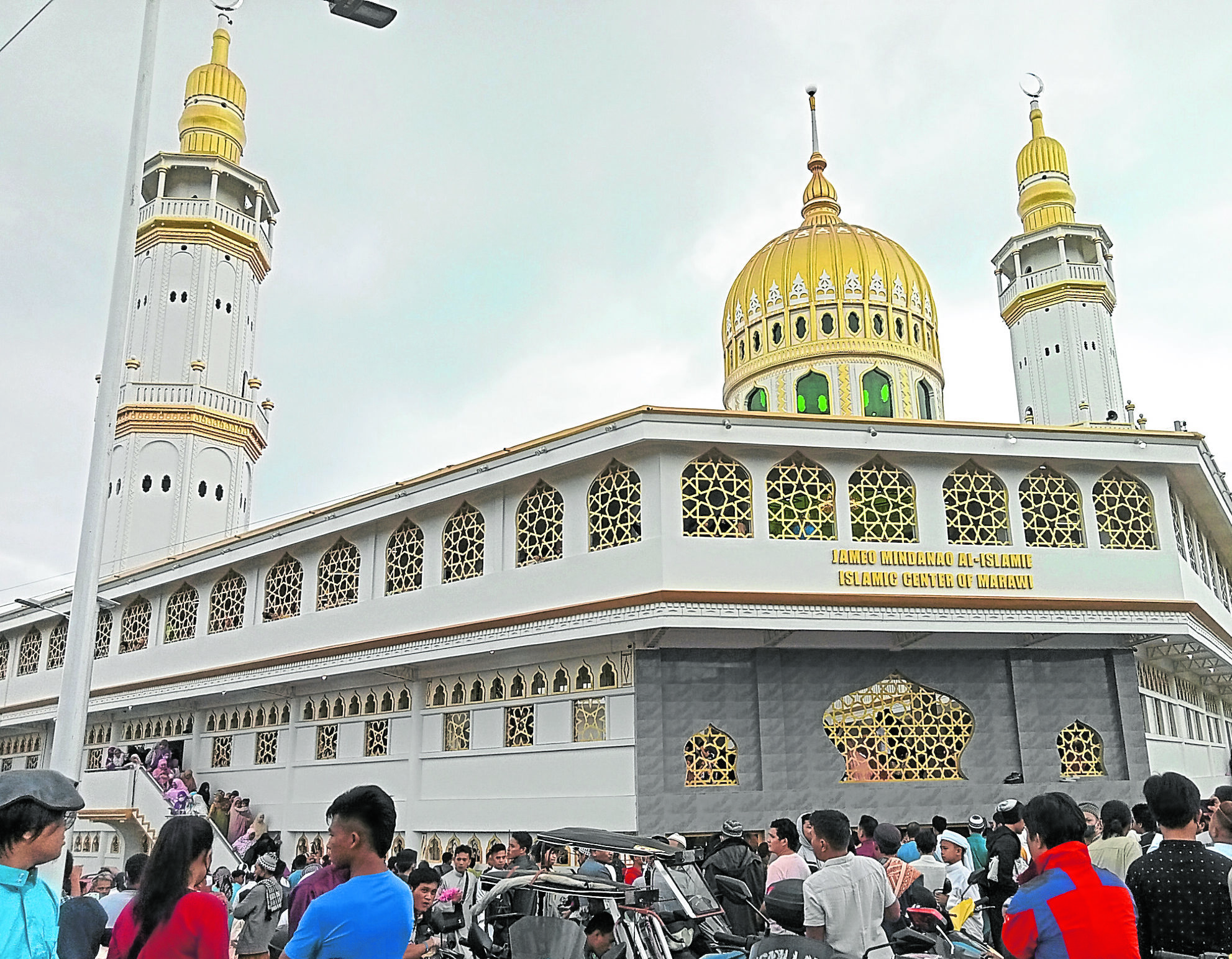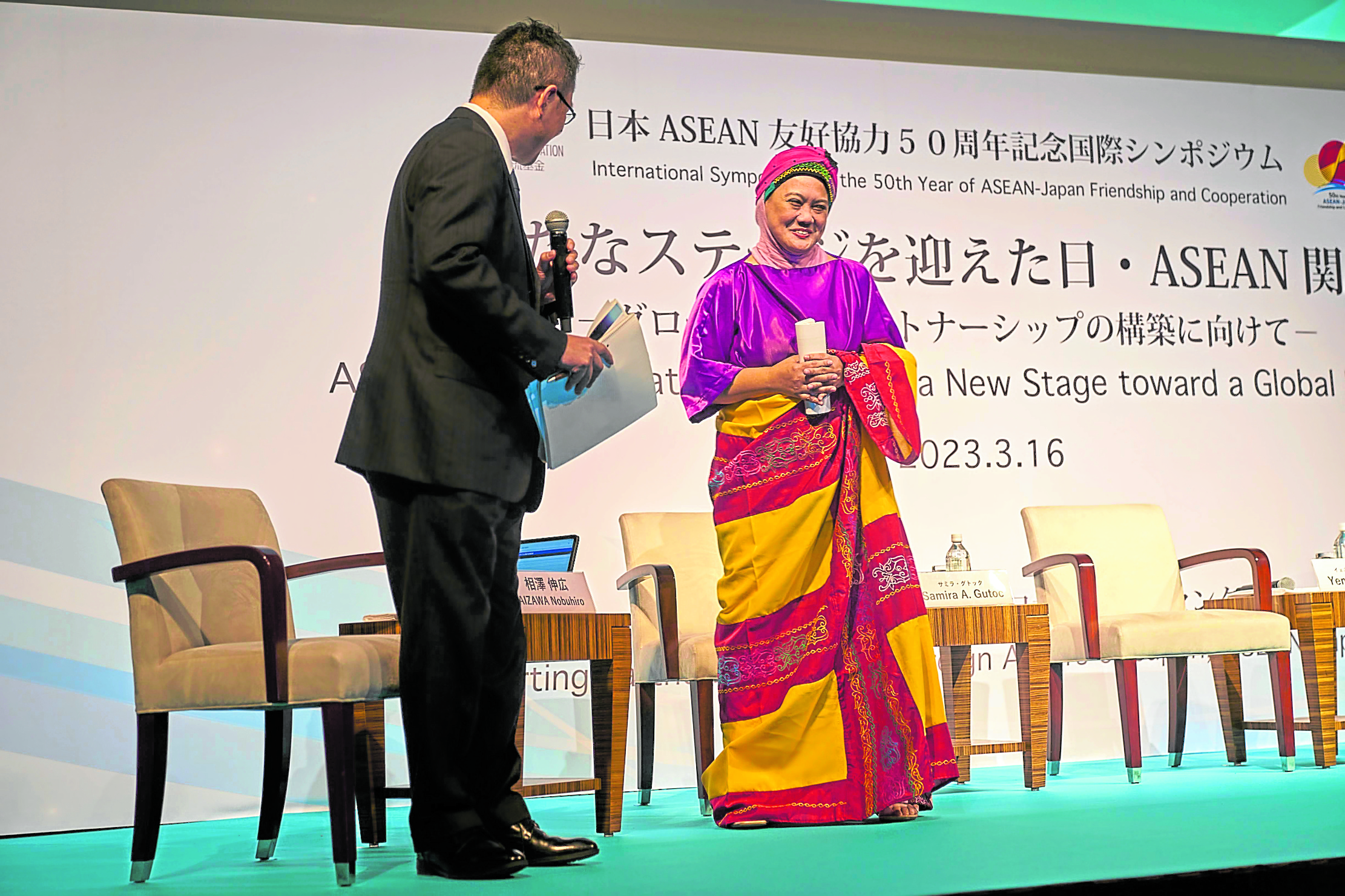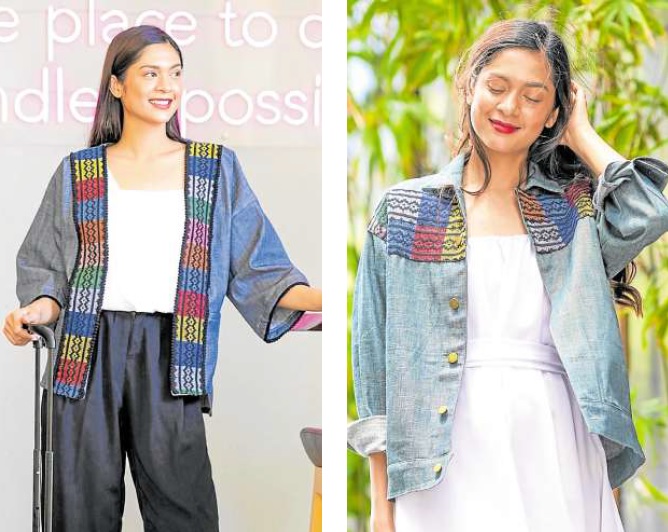Embrace halal fashion, spur Marawi recovery

KEEPING THE FAITH For the first time since the 2017 siege of Marawi, Maranaws were allowed to gather at the Jameo Mindanao Al-Islamie Islamic Center or grand mosque in this photo taken at the end of Ramadan in 2022. —CONTRIBUTED PHOTO
How is Marawi?” People often ask me.
We had finished Ramadan months ago; infrastructure is almost complete; half of the 96 barangays are operating. But thousands are still outside ground zero, the former bustling district of Bangsamoro. The site of fighting was a former market, a mecca for all textiles and products once upon a time visited by many tourists.
Residences continue to be deserted and in rubble from the five months of artillery and bombing in 2017.
We still need much help. Daily food rations stopped just months after the so-called liberation.
Cash is a concern for rebuilding residences. President Marcos, only months ago, appointed a Marawi Compensation Board (MCB) that will award claims to the property and landowners. In time for siege commemoration on May 23, the MCB signed its implementing rules and regulations just recently. Sadly, there is not much budget this 2023 to accommodate the claims of the thousands of internally displaced persons (IDPs), also called bakwits (evacuees).
I am not from government so the least I could do is to continue the work on protection of evacuee communities, which we started through a Ranao Rescue Team, a humanitarian serving group.
Getting out of the box of locating and providing ayuda (aid) in the last year brought me to places in the United States and Japan to speak, and on the side, demonstrate and advertise malong and weaving as a means to help evacuees sustain a livelihood.
Malong is most versatile. Not only is it useful in typhoons and other calamity but also in times of conflict. It is a wrap-around, a blanket, a towel, a decor. We reminded all embassies and overseas Filipinos that buying a malong saves a family because it provides income to evacuated mothers who feed the family.
We, IDPs, are part of MindaNow Trade Fair network.
We count five groups that employ as many as five sewers within such evacuees network. There are a few living elders who teach weaving patterns that are in danger of dying with these senior weavers.
One intricately woven landap malong can take two weeks to weave on a loom and can cost as high as P6,500. The regular ones are cheap at P200 at the Muslim center in Quiapo. Our challenge is the transport cost to bring it abroad.
My Lanao sponsors, Los Angeles-based Filipino couple Mark and Editha Ombra, run a shop at the Filipino center that sells the malongs. They hope to help bring there cultural troupes of Mindanao State University this Philippine Independence Day to highlight the cause.
A modern way of wearing the designs is through accents on bags, headbands, pants and ID holders as Ziya boutique, owned by my sister Norhani Pacasum, is doing. Norhani, with native weavers, has brought the langkit—the band of woven tapestry used to decorate the malong—to the national marketplace through Robinsons, Glorietta and SM malls. Ziya has five shops to date.
Malong weaving is a heritage and centuries-old legacy worth preserving.
To promote local fabric, we found ways to post the designs online. Robinsons Place Iligan helped us by providing a venue to showcase the langkit accents on pants, gowns and dresses by Iligan-based designer Arlaine Arreola. We upped hashtags #wearlocal and #buylocal to popularize the campaign.
To cap it all, I walked New York Fashion Week! It was surreal, thanks to Alegre de Pilipinas and MSY Marketing. Sulu designer Elsimir Tawasil lent me his blouses that display awesome patterns and waves.

IDP ADVOCATE Samira Gutoc wearing “malong” in Tokyo at the Association of Southeast Asian Nations-Japan symposium on March 16—CONTRIBUTED PHOTO
***
Halal was a headline for the Muslim community. Pork blood oiled on tuna fish at a General Santos market to make them look fresher shocked the community. We thank the market supervisor for the action to review licenses and permits of the concerned vendors. Having halal slaughterhouses in provinces or towns with a Muslim population, conducting regular inspection and hiring of Muslim inspectors are some of written recommendations by local ulama (Muslim scholar). Meanwhile, young Moro professional, Dimnatang Radia of the Department of Trade and Industry, needs all the support to seek budget for his unit at the Philippine Trade Training Center, which is giving attention to halal products.
***
This coming June is hajj pilgrimage season, a trip of a lifetime for Muslims. It is an economic activity too because many financial preparations arise for a travel that might cost almost half a million per person.
One would think that coming from the siege of Marawi and Lanao, only a few can afford such travel. Surprise! Thousands apply to embark on this holy obligation even if the faith reminds that it is incumbent upon only those who can afford.
Hajj is not just one of the five pillars of islam. Hajj showed me early on as a kid growing up in Saudi Arabia the diversity and oneness of the world. The Quran reminds that we were “made into nations and tribes …”
Saving up for this trip, mobilizing support from the clan—these are all part of the bayanihan features of Meranao cultural community, the trading sector among the 13 ethnolinguistic Moro groups.
Resiliency indeed captures the local spirit. The war trauma didn’t prevent the locals from finding ways to get back on their feet. We reminded the Bangsamoro Transition Authority, which is conducting a hearing on the bill for displaced persons, to also track the victims outside Bangsamoro because they, too, have lost possessions. —CONTRIBUTED INQ
Samira Gutoc, a former Inquirer Marawi correspondent, is a civil society leader and chair of advocacy group Ako Bakwit. A former Bangsamoro Transition commissioner, she resigned in 2017 to serve the Marawi siege victims.


